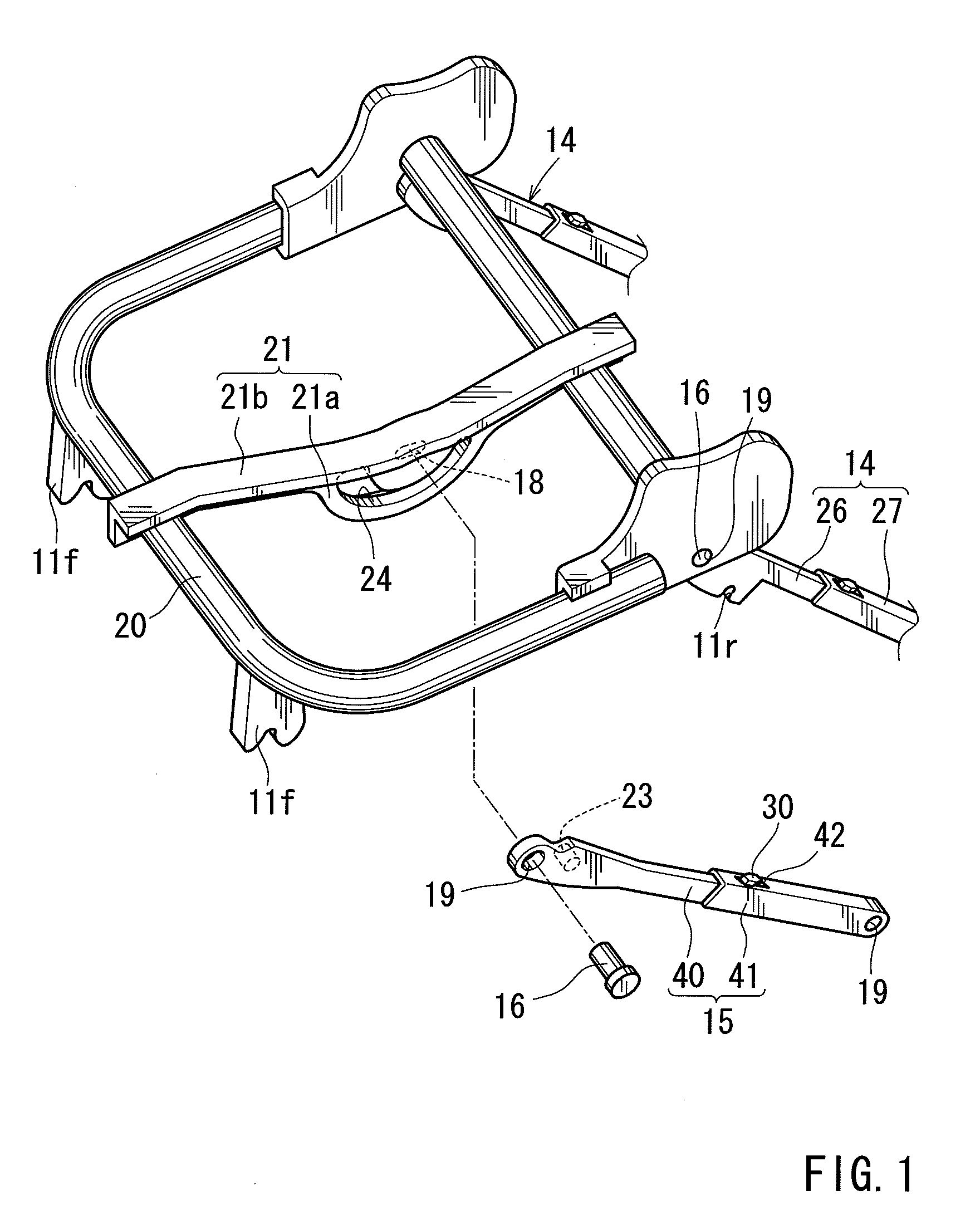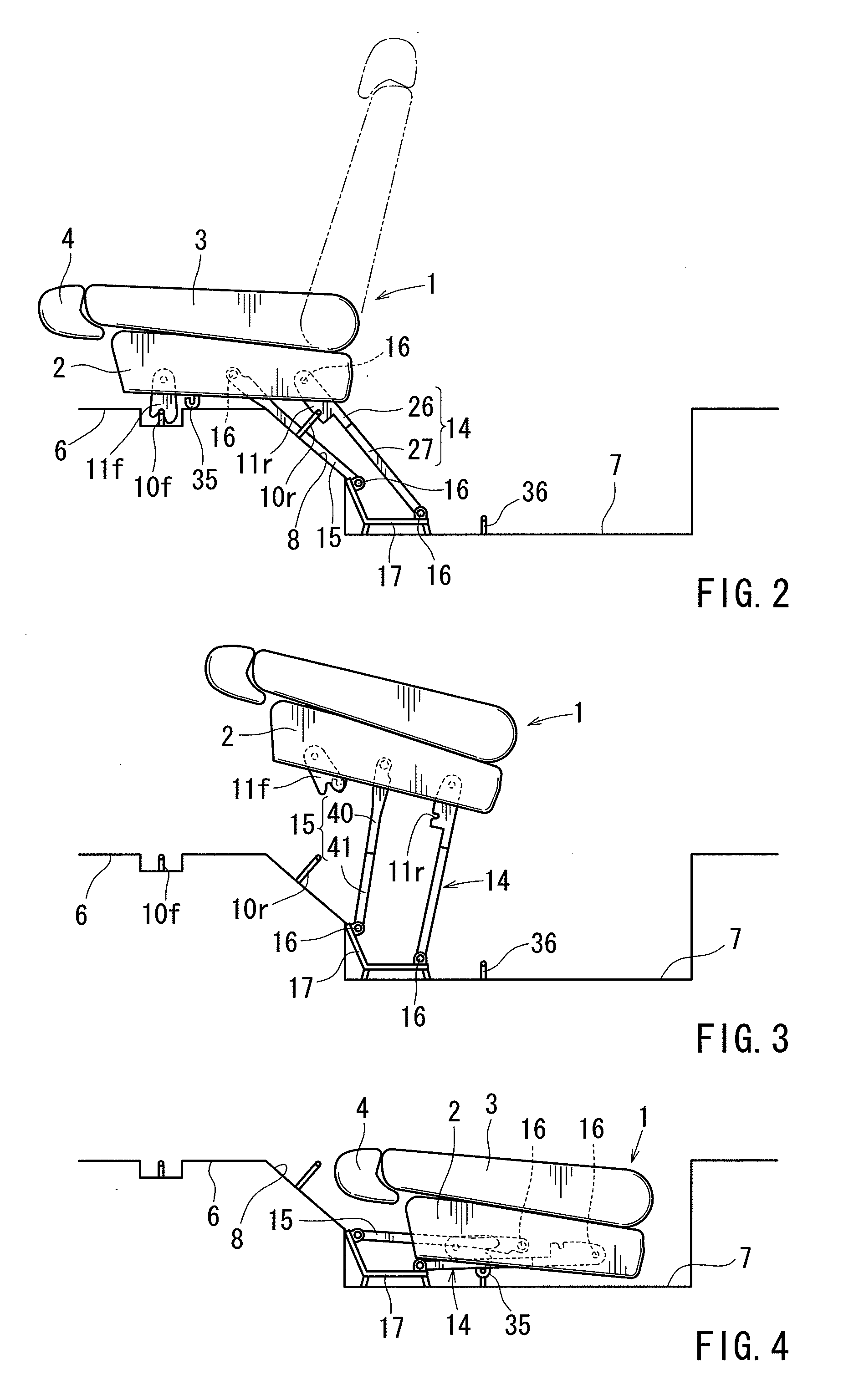Storable seat for vehicle
a storage seat and vehicle technology, applied in the direction of movable seats, roofs, transportation and packaging, etc., can solve the problems of seat movement not being smooth, position is not stabilized, and the mounting location and dimension errors, so as to prevent an undue load and stable manner
- Summary
- Abstract
- Description
- Claims
- Application Information
AI Technical Summary
Benefits of technology
Problems solved by technology
Method used
Image
Examples
Embodiment Construction
[0023]As is shown in FIG. 2 through FIG. 4, a seat 1 has a seat cushion 2 serving as the seating portion for a passenger, a seat back 3 serving as the back rest, and a head rest 4 to support the head. The seat 1 is applicable as a rear seat for vehicle, such as an automobile. The seat back 3 is coupled to the seat cushion 2 via an unillustrated reclining mechanism. The seat back 3 is pivotally movable in a front-rear direction between an in-use posture uprising on the seat cushion 2 and a not-in-use posture folded forward over the seat cushion 2. The in-use posture of the seat cushion 2 is indicated by a virtual line in FIG. 2. The not-in-use posture of the seat cushion 2 is indicated by a solid line in FIG. 2. The seat 1 is movable in the front-rear direction between the in-use position shown in FIG. 2 and the stored position shown in FIG. 4. The in-use position is a position at which the seat 1 is fixed on a floor 6 for a passenger to be seated thereon. The stored position is a po...
PUM
 Login to View More
Login to View More Abstract
Description
Claims
Application Information
 Login to View More
Login to View More - R&D
- Intellectual Property
- Life Sciences
- Materials
- Tech Scout
- Unparalleled Data Quality
- Higher Quality Content
- 60% Fewer Hallucinations
Browse by: Latest US Patents, China's latest patents, Technical Efficacy Thesaurus, Application Domain, Technology Topic, Popular Technical Reports.
© 2025 PatSnap. All rights reserved.Legal|Privacy policy|Modern Slavery Act Transparency Statement|Sitemap|About US| Contact US: help@patsnap.com



